Why honeysuckle does not bear fruit well
Honeysuckle has a tart taste and healthy composition. The berry is used to make vitamin jams and compotes. Honeysuckle is unpretentious to care for, so every year more and more summer residents plant it on their site. The bushes are lush and spreading, many place them as hedges or near garden buildings. Despite the fact that caring for honeysuckle does not require special knowledge, sometimes the berries ripen small or do not grow at all, become bitter or sour. How to care for honeysuckle in this case, we will consider in the article.
The content of the article
Why honeysuckle does not bear fruit well
To understand why honeysuckle does not bear fruit, it is important to understand the root causes: some depend on climatic conditions and the growing region, others on mistakes in agricultural technology. Also, fruiting is affected by diseases and pests, which can only be eliminated by professional methods of treatment.
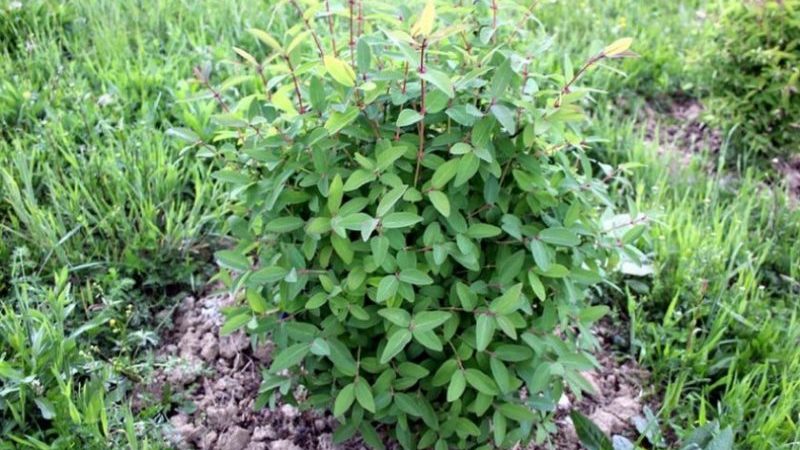
Freezing
Most varieties are winter hardy - withstand temperatures down to -40 ° C... It is for this reason that honeysuckle is so fond of growing summer residents of the northern regions of the country. Unlike thermophilic berries, the plant rarely freezes. Shrubs do not need shelter for the winter, which makes it easier to care for them.
However, there are exceptions to every rule: if the flowering period begins and the temperature drops sharply by 10 ° C, the flowers will freeze. In the future, this will negatively affect the fruit set and yield. Such spring frosts are most often found in the Urals and Siberia in late April or early May.
Attention! If frost has come and honeysuckle does not bloom, it is recommended to devote time to protective measures. Sprinkle the plant with mulch (sawdust, hay, peat, coniferous branches) - it protects the roots, retains heat and retains moisture. Some gardeners use a covering material - agrofibre or dense film. Planks are placed under the branches so that the shoots do not come into contact with the cold ground.
Lack of sun
Ideal site for planting honeysuckle - partial shade. The plant spends part of the day in the sun, part in the shade. Problems arise only if the honeysuckle is always in a dark place where sunlight does not penetrate. Because of this, the plant is often sick, the fruits grow small.
Honeysuckle transplant does not tolerate well, therefore, summer residents think over and prepare a suitable place for planting in advance.
Improper watering and feeding
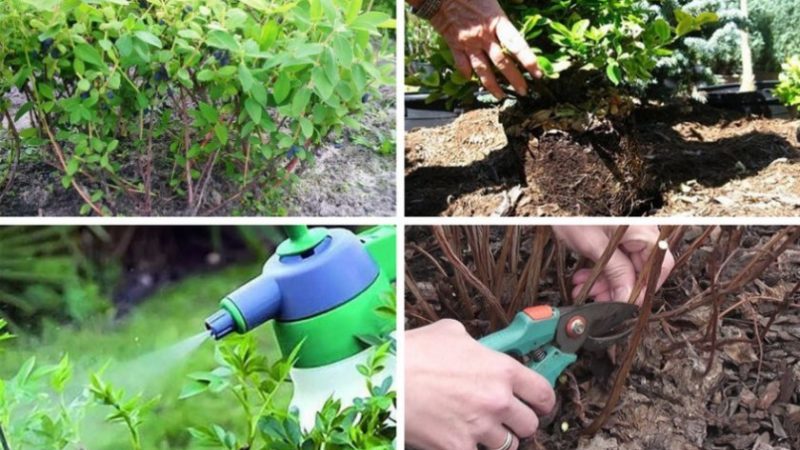
Honeysuckle is drought-resistant, but you shouldn't forget about watering. Experienced summer residents recommend bringing about 2 buckets of water under the bush every day. If the summer is hot and dry - 3-4 buckets. The amount of water directly affects the size and taste of the fruit. Particular attention is paid to watering in late May and early June, when the berries are tied.
Common mistakes gardeners make:
- use of cold water;
- watering in the middle of the day when the sun is baking;
- non-observance of the interval between procedures;
- abundant watering with a long break;
- using a powerful jet from a hose;
- watering without subsequent mulching.
Mineral and organic dressings stimulate plant growth, improve the taste and size of fruits, protect against diseases. In order for honeysuckle to bear fruit well, summer residents in the beginning of spring apply nitrogen-containing fertilizers - urea, Agricola, Kemira Lux.They stimulate the development of green mass, are responsible for the attractive decorative appearance of shrubs, and increase the annual growth of new shoots. After flowering, organic matter is introduced: peat, humus, biohumus, dry wood ash. The taste of honeysuckle and its commercial qualities depend on it. In the fall, the shrub is fertilized with phosphorus-potassium dressings.
Attention! Lack of mineral and organic substances in soil as dangerous as excess. Therefore, when making top dressing, summer residents follow the dosages and recommendations. For example, if you overfeed the honeysuckle with nitrogen, the plant will devote all its strength to the development of the leaves, and the fruits will remain small and fresh.
Diseases and pests
Diseases arise for various reasons: due to excess or lack of moisture, improper fertilization, severe frosts or heat, contaminated soil. Most diseases are fungal, capable of destroying the entire fruit ovary. There are also viral and bacterial; as a rule, they arise from infected seedlings:
- Ramulariasis appears as gray-brown spots with a gray border. It intensifies in wet and cool weather - leaves are covered with a white bloom. Shoots and petioles are soon damaged, the shrub withers and weakens.
- Tuberculariosis - reddish-brown tubercles on the shoots. The leaves dry out, and the branches slowly die off and lose the ability to bear fruit. The fungus is frost-resistant, hibernates in the soil and appears outside with the onset of heat.
- Powdery mildew affects young and old shrubs, actively manifests itself in late spring or early summer. Leaves and shoots are covered with a white bloom, which soon turns into brown and dry spots. It is very difficult to get rid of powdery mildew.
- In the process of infection with cercospora honeysuckle is covered with small brown spots. The plant lacks vitamins, it dries out slowly. Favorable conditions for the development of cercosporosis are dense plantings, rainy and humid weather.
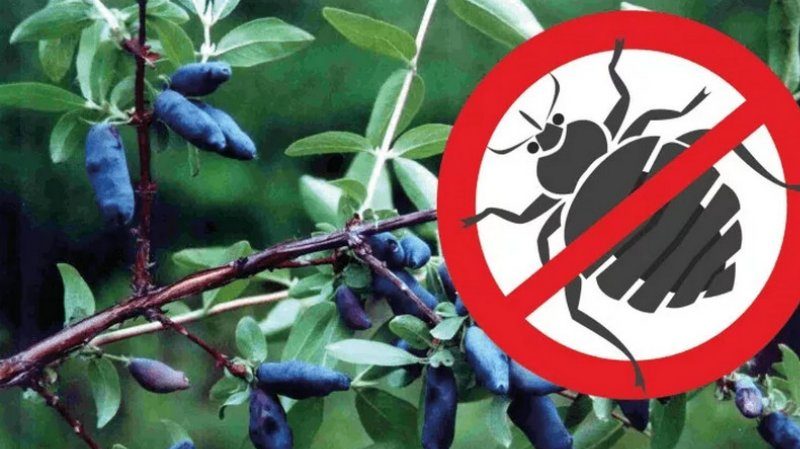
Of the pests, summer residents note ticks and aphids... Small insects live in colonies and attack mainly young and green leaves. Aphids suck the juices from the plant, which is why leaves are covered with yellow bloom, curl up and die.
Because of the mites, the plant sheds its leaves ahead of time and loses its ability to bear fruit. Even if the gardeners managed to get rid of insects, the plant's immunity is still weakened, therefore, during this period, honeysuckle needs special care.
What to do if there are no berries on honeysuckle
If there are few berries on the honeysuckle or there are none at all, summer residents are looking for the cause of this phenomenon and pay attention to agrotechnical measures. Subject to all the rules and recommendations, honeysuckle will again delight with edible and juicy fruits.
Pollination
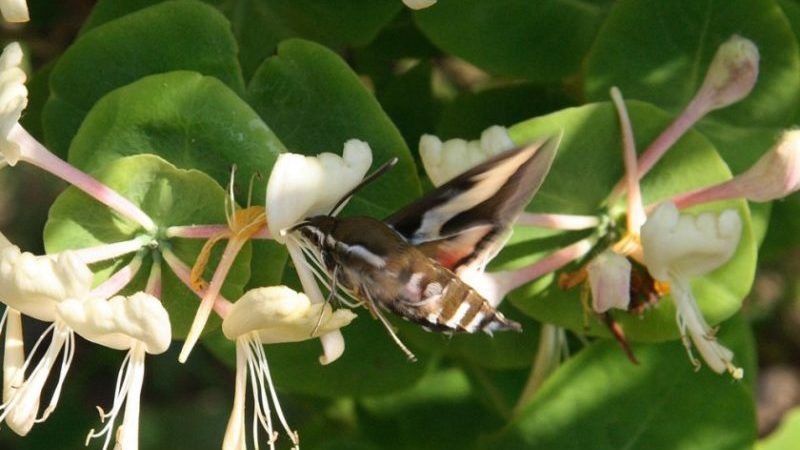
Honeysuckle refers to cross-pollinated crops, so gardeners grow several different varieties on the site at once... By itself, honeysuckle is self-fertile. For convenience, summer residents purchase seedlings in a group, and not individually. For example, Gourmet perfectly pollinates with varieties Blue spindle and Antoshka, and Titmouse's honeysuckle - with Kamchatka and Blue dessert. The more varieties grow on the site, the higher the chances of getting a tasty and rich harvest.
In the cross pollination insects are involved - bumblebees, wasps and bees. They transfer pollen from one shrub to another. To attract insects to plants, gardeners spray the honeysuckle with sweet water. Rain and wind also help in pollination of shrubs.
Attention! If you plant one honeysuckle bush on the site, this will not bring results. You can buy several varieties that match each other at once in special nurseries.
Pruning
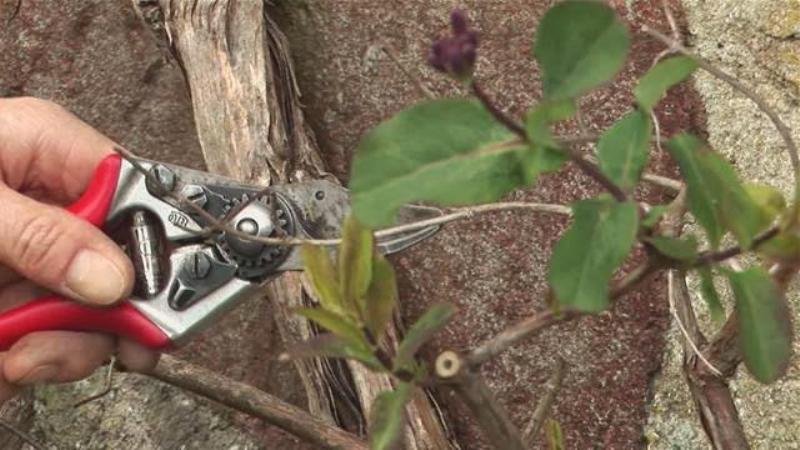
PruningIs one of the most important honeysuckle care procedures. It is carried out annually, starting from the third year of the plant's life. Depending on the goals, they distinguish between sanitary, formative, anti-aging pruning. For the procedure, you will need a pruner and a stepladder.
The inventory is treated with a solution of Bordeaux liquid, and the places of the cuts are lubricated with garden pitch to protect the plant from infection:
- In the process of sanitary pruning, diseased and dry shoots that have appeared as a result of illness and insect damage are removed. Sanitary pruning also serves as a preventive measure to protect against new diseases.
- Formative pruning is essential for crown formation. It is carried out every 2-3 years, shoots that intertwine with each other or grow down are removed.
- Rejuvenating pruning is carried out on shrubs over 5-7 years old. All shoots are shortened, and damaged and dry ones are cut out completely. Thanks to this procedure, the life of the honeysuckle will be at least 20 years.
Regular watering and feeding

Recovery of honeysuckle and stable fruiting are impossible without regular watering and fertilizing. The following fertilizers are suitable for the shrub:
- nitroammofosk - 20 g per 1 sq. m;
- wood ash solution - 300 g per 10 liters of water;
- "Kemira Universal" - 20 g per 10 liters of water;
- Agricola - 1 tbsp. l. for 10 liters of water;
- 80 g superphosphate per 1 sq. m;
- 40 g of potassium salt per 1 sq. m.
If the shrubs do not grow well, and the honeysuckle is getting smaller, summer residents also use foliar fertilizers. Honeysuckle is sprayed with a solution of urea - 5 g of the drug is diluted in 10 liters of water. The sprinkling method is used. This solution improves the quality and size of the fruit.
Before applying top dressing and spraying, the honeysuckle is watered abundantly with water, previously warmed up in the sun.
Prevention of diseases and pests
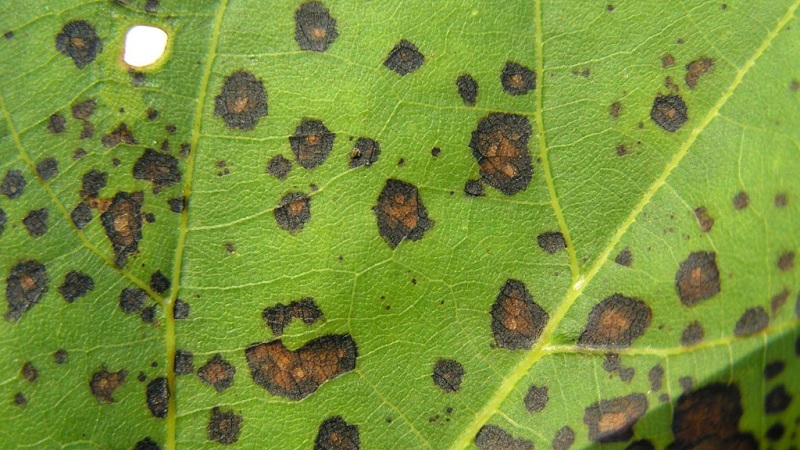
Preventive measures not only prevent the appearance of diseases and pests, but also strengthen the shrub's immunity and improve the taste of berries. Simple and effective ways:
- Spraying in early spring with 0.2% "Fundazol" or a solution based on soap and copper (10 liters of water, 100 g of copper sulfate and 100 g of grated laundry soap).
- At the beginning of summer, plantings are sprayed with infusion of garlic - 600 g of chopped heads are poured into 10 liters of boiling water and infused for 3 hours. The tool is poured over the soil at the rate of 0.5 liters per 1 sq. m.
- Twice a season, the honeysuckle is treated with water left over after boiling potato tubers. Such feeding is rich in starch and does not require financial costs.
- Preventive measures include adherence to the planting scheme. The distance between seedlings should be at least 2.5 m. Suitable neighbors for honeysuckle are peas, onions, parsley, dill, turnips, radishes. Do not plant next to apple trees, pears, raspberries, currants and gooseberries.
Conclusion
Finding out why honeysuckle is shallow is not so difficult. The cause may be diseases or pests, lack of sun or frost, non-compliance with the rules of watering and feeding.
To make honeysuckle delight with delicious fruits, summer residents devote time to preventive measures: they treat shrubs with folk remedies and professional preparations, cut off old branches annually, use warm water for irrigation. Honeysuckle is one of the most picky garden crops. The main thing is to follow the simple rules of agricultural technology.